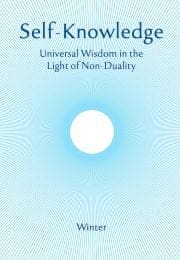Non-duality and Sufism
It is one of the glories of Sufism that it has never lost sight of the universality of ultimate Truth. It has not fallen into a narrow fanaticism. Jalaluddin Rumi tells in his Mathnawi how four comrades were once given a dirhem to spend between them. One of them, a Persian, said: ‘I will spend this on angur.’ The second, who was an Arab, said: ‘No, I want inab not angur.’ The third was a Turk and he said: ‘This money is mine. I don’t want inab. I want uzum.’ The fourth, a Greek, said: ‘Stop this talk. I want istafil.’ At last they were persuaded by a wise man to desist from their bickering. He pointed out that they were all calling in their own languages for a bunch of grapes. So they bought a dirhem’s worth of grapes between them and enjoyed them together.
The Truth and its realisation is like the grapes to the practising Sufis, who see the reality beyond the name, and who live the truth of the saying:
In the name of Him who has no name but who responds to whatever name you choose to call Him by.
Mohammed passed on the inner mystical teachings in private to his close disciples as well as laying the foundations of the outward creed of Islam and the procedures of public worship. These teachings were handed down through Ali, Abu Bakr and others who, in accordance with tradition, disclosed them to suitably qualified pupils who were deemed worthy of instruction. Many times in the Mathnawi, Jalaluddin Rumi begins to speak of these teachings and breaks off with the explanation that it is not permitted to say more. The truth is available to all sincere seekers who are prepared to undergo the necessary discipline under a teacher (Pir, Sheikh, or Murshid). In the same way, the masterpieces in the National Gallery can be seen by any visitor interested enough to go inside, but they are not hung at street corners to be subjected to dust and damage.
These teachings affirm the essential identity of the individual soul and God, and their seed can be traced back to verses in the Quran such as:
Wherever ye turn, there is the face of Allah.
If my servant ask thee about Me, lo, I am near! We (God) are nearer to man than his neck-vein.
And in the earth are signs to those of real faith And in yourselves. What! do ye not see?
Just as St Francis returned to the Christian ideal of poverty and renunciation, the Sufis broke loose from pomp and ceremonial, and looked within themselves for religious inspiration. Shri Shankara in the similar circumstances of his day had taken a leading part in urging that the living spirit of religion is not to be found in the mechanical repetition of symbolic rituals. So also the Sufis looked back to the verse of the Quran:
Righteousness does not consist in turning to the East or West.
Rumi wrote:
The true mosque is built in a pure and holy heart. There let all men worship God, for He dwells there and not in a mosque of stone.
Subscribe or enrol for free guest access to read all of this article and Self-Knowledge online.
Already subscribed or enrolled? Log in:


